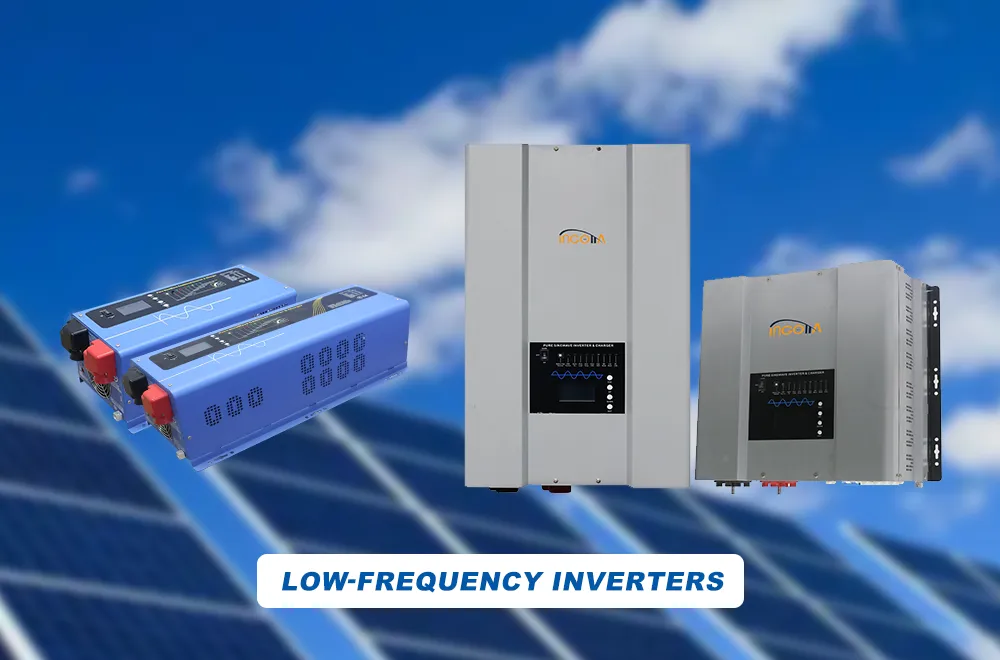Understanding Low-Frequency Inverters: A Comprehensive Guide
In the world of power conversion, low-frequency inverters play a crucial role in delivering reliable and stable electricity for a variety of applications. Whether you’re powering sensitive electronics, running heavy machinery, or ensuring backup power during outages, understanding what a low-frequency inverter is and how it works can help you make an informed decision for your energy needs. This article dives deep into the features, benefits, and uses of low-frequency inverters, providing you with the knowledge to choose the right inverter for your setup.
What Is a Low-Frequency Inverter?
A low-frequency inverter is a type of power inverter that operates at a lower switching frequency compared to its high-frequency counterparts. These inverters typically use a transformer-based design, which allows them to handle high surge currents and provide robust performance under heavy loads. The term “low frequency” refers to the internal operation of the inverter, not the output frequency, which is usually standardized at 50Hz or 60Hz depending on the region.
How Do Low-Frequency Inverters Work?
Low-frequency inverters convert direct current (DC) from sources like batteries or solar panels into alternating current (AC) using a multi-step process. First, the DC input is converted into a high-voltage AC signal through a switching process at a lower frequency. This signal is then passed through a heavy-duty transformer, which steps up the voltage and provides isolation. Finally, the output is filtered to produce a clean sine wave suitable for powering AC devices. The use of a transformer not only ensures voltage regulation but also offers superior surge protection.
Key Features of Low-Frequency Inverters
Low-frequency inverters are known for their durability and ability to handle high starting currents. Here are some standout features:
-Robust Transformer Design: The built-in transformer allows these inverters to manage surge loads up to three times their continuous rating, making them ideal for motor-driven appliances.
-High Efficiency Under Load: They perform efficiently when operating close to their rated capacity, reducing energy waste.
-Long Lifespan: With fewer electronic components stressed by high-frequency switching, low-frequency inverters often have a longer operational life.
-Excellent Overload Protection: The transformer provides natural resistance to short circuits and overloads, enhancing safety.
Advantages of Using a Low-Frequency Inverter
Choosing a low-frequency inverter comes with several benefits:
– Superior Surge Capacity: Perfect for appliances like refrigerators, air conditioners, and power tools that require high startup currents.
– Reliability in Harsh Conditions: Performs well in high-temperature environments and is less prone to failure due to its simple, robust design.
– Compatibility with Inductive Loads: Handles motors and compressors without issues, unlike many high-frequency inverters.
– Clean Power Output: Produces a pure sine wave, ensuring sensitive electronics operate smoothly without risk of damage.
Common Applications of Low-Frequency Inverters
Low-frequency inverters are versatile and used in various settings:
-Off-Grid Solar Systems: Ideal for cabins, RVs, and remote homes where reliability and surge handling are critical.
-Industrial Equipment: Powers machinery, pumps, and tools in construction and manufacturing.
-Backup Power Systems: Used in UPS units and generators for homes and businesses to provide uninterrupted power during outages.
-Marine and Automotive Applications: Suitable for boats and vehicles requiring durable power conversion for appliances and tools.
Low-Frequency vs. High-Frequency Inverters
While both types convert DC to AC, they differ significantly:
-Low-Frequency Inverters : Heavier, larger, and more expensive but offer better surge handling and durability.
-High-Frequency Inverters: Lighter, compact, and cheaper but may struggle with high startup currents and have a shorter lifespan under heavy use.
Your choice depends on your specific needs: opt for a low-frequency inverter if you require reliability with high-demand appliances.
Conclusion
Low-frequency inverters are a dependable solution for anyone needing stable and robust power conversion. With their ability to handle high surge currents, compatibility with inductive loads, and long lifespan, they are particularly well-suited for off-grid systems, industrial applications, and backup power needs. While they may be bulkier and more expensive than high-frequency models, their performance and reliability make them a worthwhile investment for demanding environments. By understanding the features and benefits outlined in this guide, you can confidently select a low-frequency inverter that meets your energy requirements.
Table of Contents
